

| The pA726 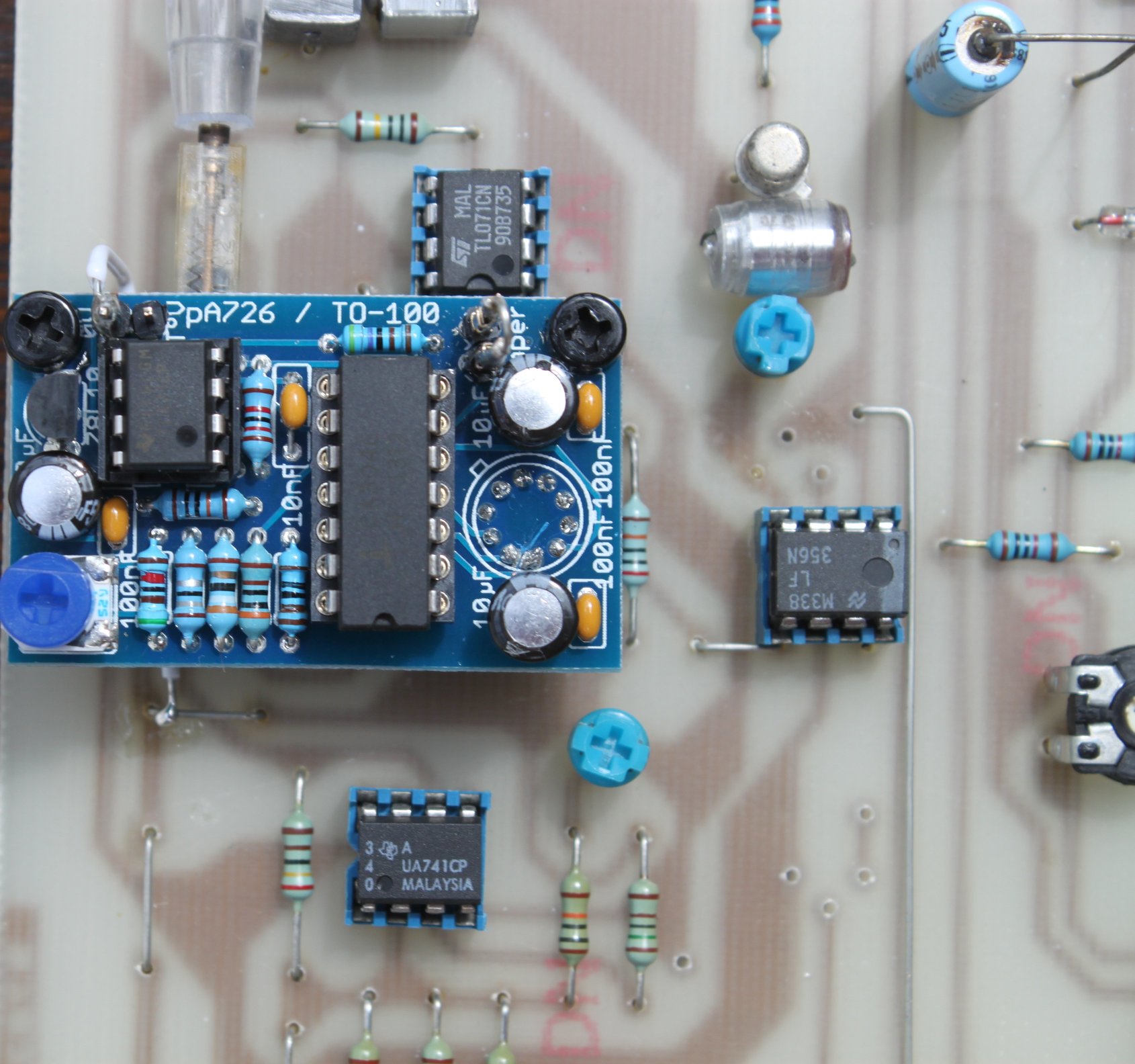 The pA726 is a
CA3046-based analog exponential converter with thermal
oven compensation as featured in various analog oscillator
circuits with great stability and accurate tracking. The pA726 is a
CA3046-based analog exponential converter with thermal
oven compensation as featured in various analog oscillator
circuits with great stability and accurate tracking.Thanks to the connections layout matching the (in)famous µA726 (UA726) pinout, it can be used as a direct drop-in replacement for this rare and expensive part. The pA726 can work on +/-12V or +/-15V and replace the µA726 in any other circuit, for a new build or for repair. It can be mounted with component legs directly to the µA726's place or to standoffs, chassis, case etc... thanks to the mounting holes and wired to the µA726's place. The pA726 is available in 2 formats to match the classic TO-100 pinout or the 208 PCBs DIP10 pinout. FAQ Does the pA726 work in all circuits using a µA726 ? Due to the CA3046 design, the pA726 works in circuits where the original µA726 has pins 3 and 10 (the transistors emitters) connected only, which is the most widely used design. It won’t work in a few rare exceptions such as the EML 101 or Moog Sonic Six but there may be more, I haven't checked every vintage synth circuit. Please check the schematics of the device before buying. Does the pA726 sound as good as the original µA726 ? The exponential conversion is about pitch only and has nothing to do with the timbre. Unlike some assertions one can read on the interweb, having a µA726 or another exponential converter doesn't affect the sound in any way, being NOS or new. Does the pA726 installation need other modifications to the circuit ? Some adjustment of the CV scaling resistor might be needed, same as if a µA726 is replaced with another µA726. Does the pA726 need to warm up ? The circuit needs some time to warm up and stabilize, evolving pitch during 5-10 minutes after power up is normal behavior. Does the pA726 ensure stable pitch ? When the circuit is warm no drift occurs. Does the pA726 track as good as the original µA726 ? In a 208r rev2, I can get perfect tracking on more than 5 octaves with the pA726, which is a little higher than the µA726. Does the pA726 work with equivalent ICs ? The pA726 works with TL071, TL081 or CA3146, CA3086, UL1111 etc... as well. pA726 with the µA726 TO-100 round pinout (44x26mm) The pA726 needs a ground connection. The N/C pin 7 of the µA726 emplacement can be used, there's a connection to this pin on the pA726 PCB but an extra connection between the former µA726 pin 7's pad and ground must be added on the board which will receive the pA726, otherwise the circuit won't work as it should. If for any reason this pin 7 can't be used as a ground connection, don't solder it and rather connect the pA726's 0V pad to ground. In most circuits pin 2 is connected to ground and a bridge can be done between pins 2 and 7 to achieve the ground connection (pin 2 is not permanently wired to 0V in case the pA726 in used in a circuit with different layout). The pA726 works in circuits where the original µA726 has pins 3 and 10 (the transistors emitters) connected only, which is the most widely used design. It won’t work in a few rare exceptions such as the EML 101 or Moog Sonic Six but there may be more, I haven't checked every vintage synth circuit. Please check the schematics of the device before buying. 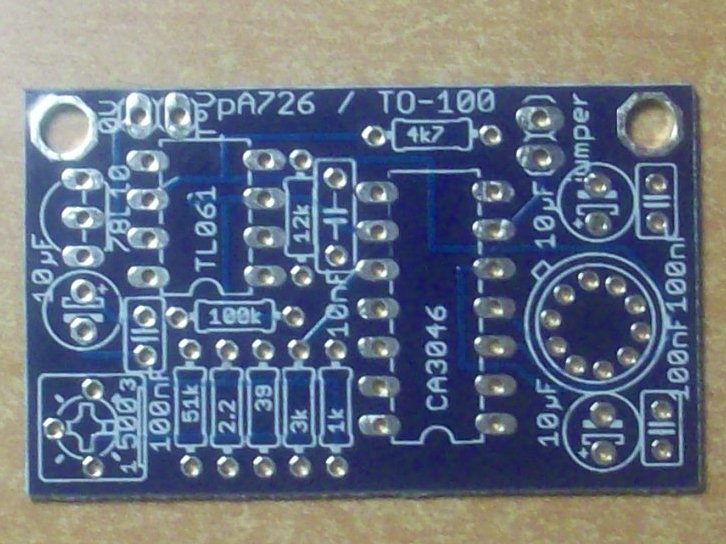 BOM, build notes and calibration procedure pA726 for 208 with DIP10 pinout (64x29mm) It was designed with the 208 in mind and can be mounted to the solder side of boards 6 and 7 with components legs. Headers can be used too but pay attention not to upset access to the motherboard trimpots. Thanks to this handy layout, the pA726's calibration in a 208 can be performed with all the boards in place : the test point, trimpot and jumper are directly accessible like the 208's other trimpots. The pA726 PCB features two emplacements to connect the former µA726 pins : the vertical one for board 6 (near the 78L10) and the horizontal one for board 7, both are connected in parallel and only one at a time can be used. Square pads show the µA726 tab (pin 10). 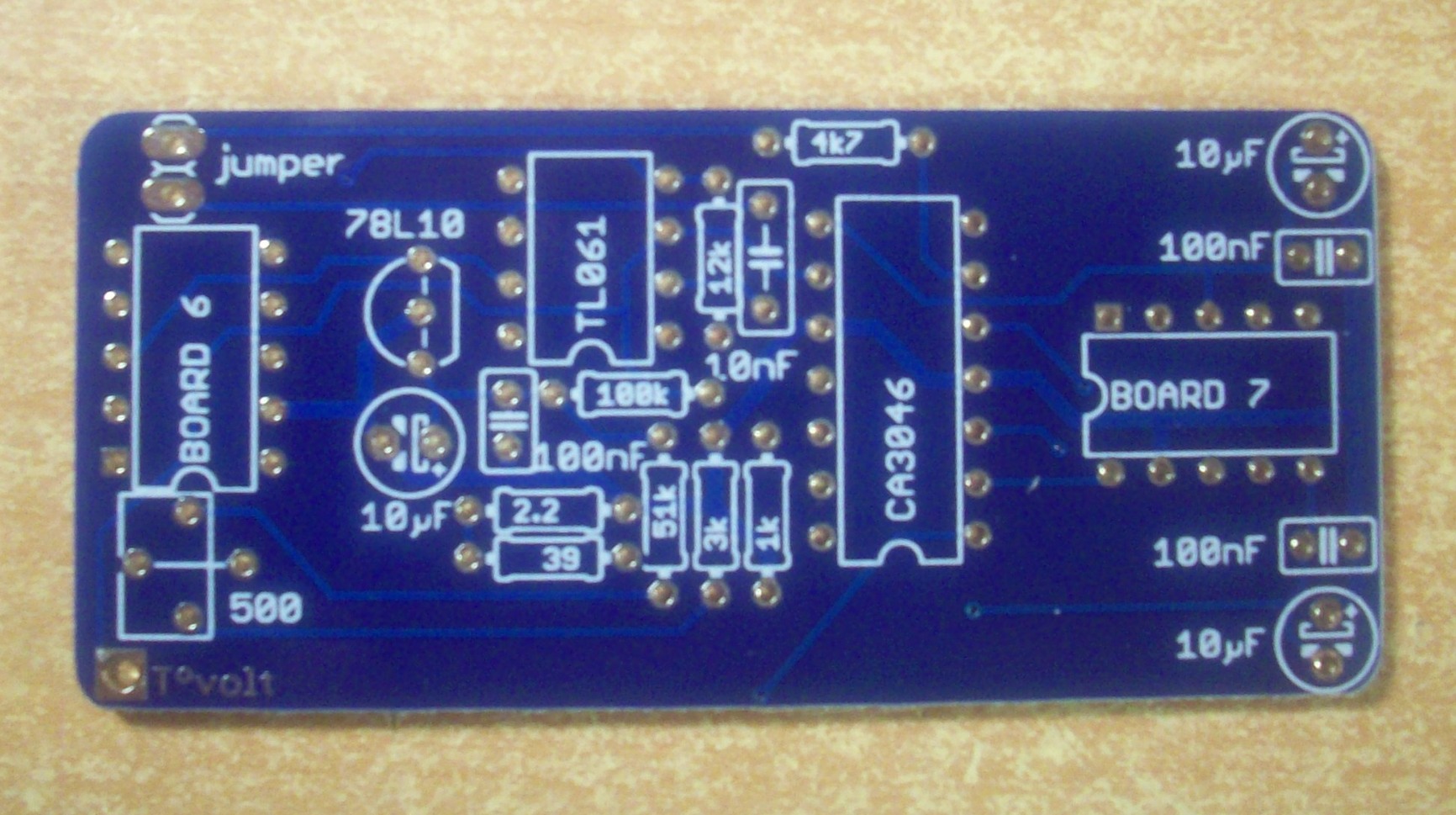 BOM, build notes and calibration procedure Build notes for the previous revision (without round corners) 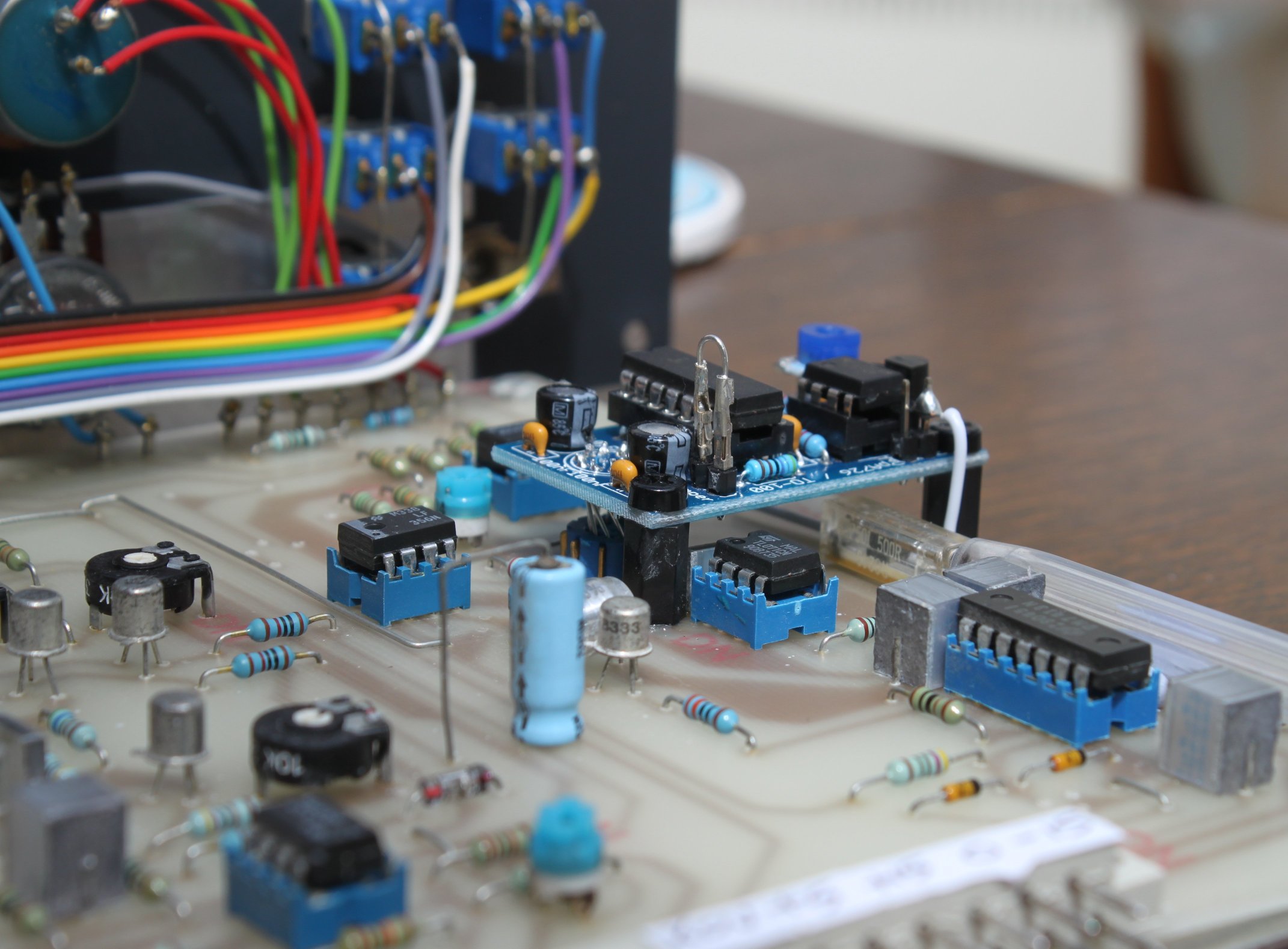 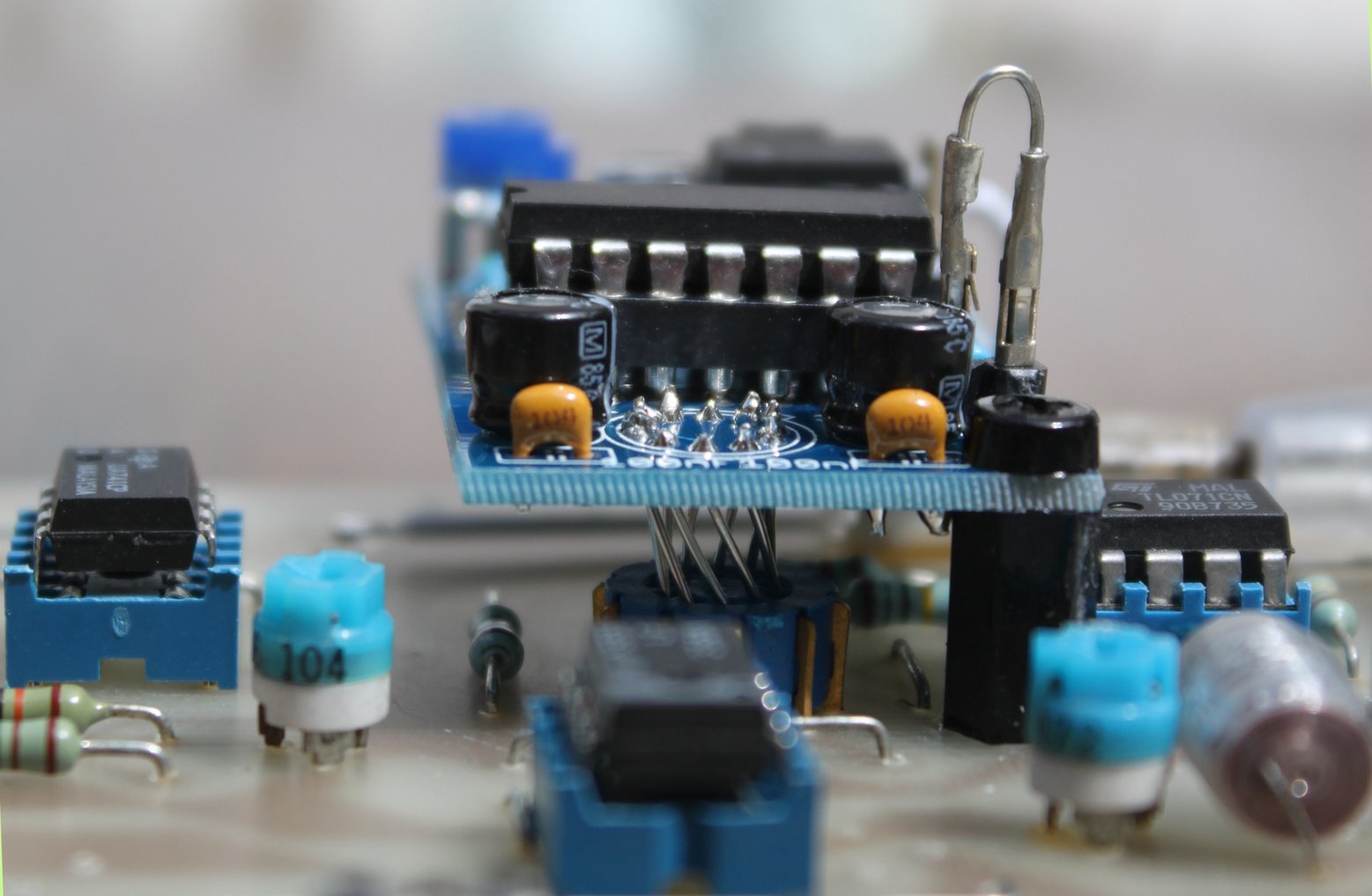 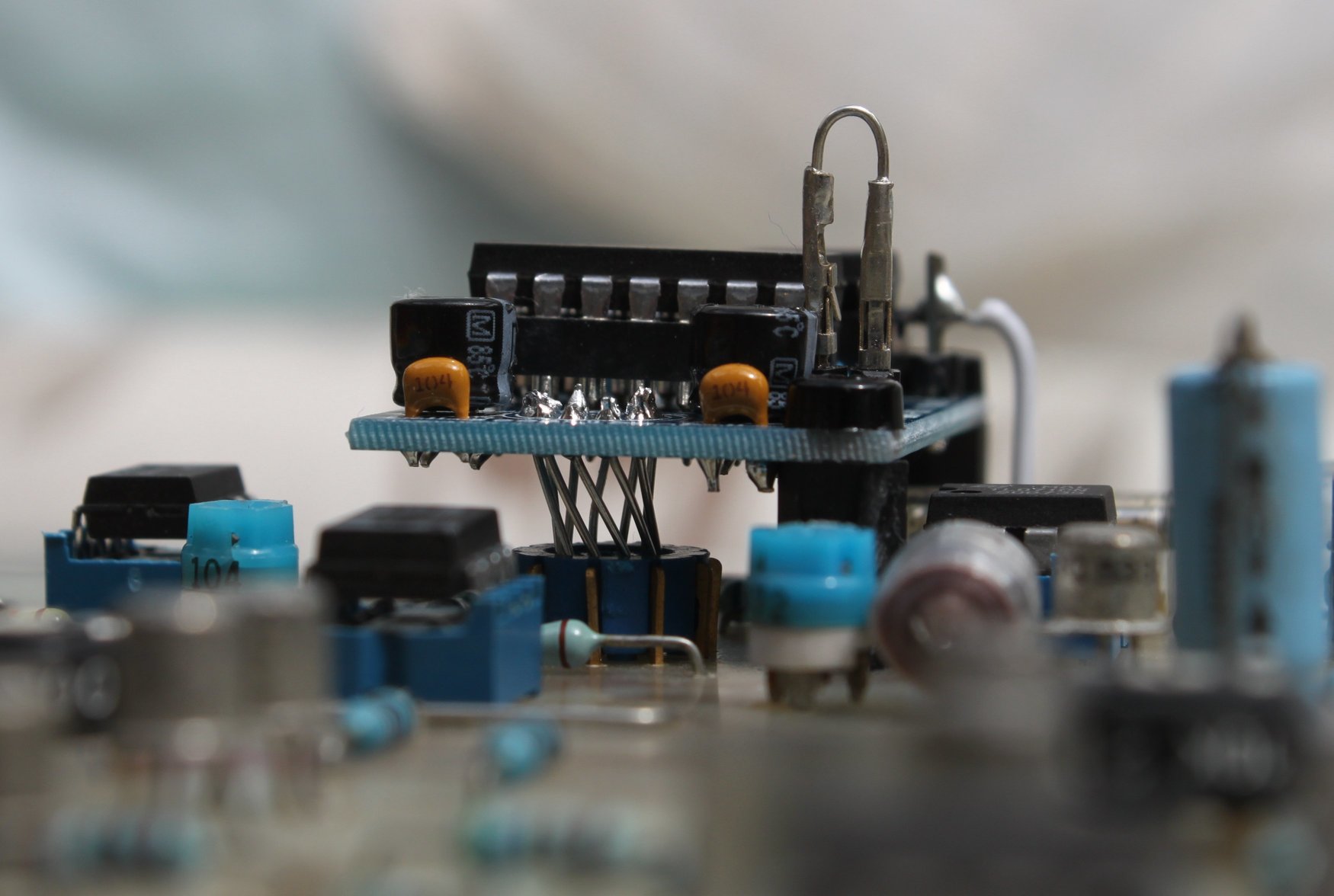  pA726 for 208 Many thanks to Andre Theelen for kindly sharing his nice pics     The bridge between pins 2 and 7 is not needed in the latest revision with roundish corners The PCBs come unpopulated and without
parts. All modifications are at your own risk and I
assume no liability for personal injury or damage to
equipment or loss of use caused directly or
indirectly by the use of any of the PCBs. Although
the installation is quite simple it should only be
performed by those experienced in electronics.
|